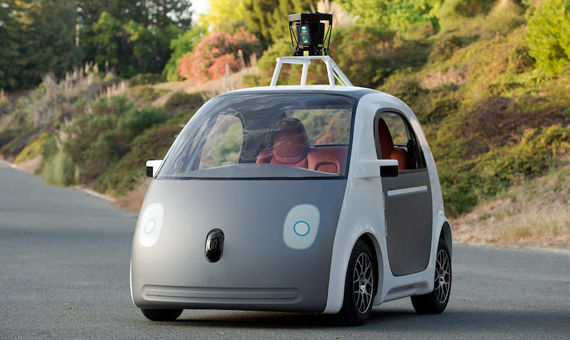If there is something that has characterized human beings from our origins, it has been the fact that we want to communicate and communicate in a variety of ways: look at the child who cries because he is hungry: the employee who works rain or shine to indirectly get a raise; any one of us may upload an Instagram photo, and we wait a matter of seconds before there is a reaction from our followers (not necessarily from those we had hoped); two anonymous cyclists smiling when they pass a line of cars stuck in traffic; the rock paintings in the cave of Altamira; the shouts of joy upon winning a sporting event; or the sense of freedom a scientist feels after sleepless nights when her research has yielded the expected result: her self-driving car can drive without a driver and more importantly, without accidents.
“Common sense” in the age of smart machines
Each of the examples referenced above represents an example of the different ways we communicate — and to put an even finer point on it — the way we express situations, desires, needs, or making an appeal to the facts, etc.
What unites these communication processes is that, in each concrete case, whoever issues the message uses a common language in order to try to express an intention, which in turn should be interpreted the same way by the message’s recipient in order to have effective communication. One of these forms of communication — or common language — could be the jubilant shouts when our team wins a match, uniting fans at a sports stadium, not so very differently from how spectators at a Roman circus would have expressed their excitement as the gladiator they supported triumphed in the arena. It would be strange if a fan broke into tears at seeing his or her team win, although, of course, there are also tears of joy, but this is not the most typical or accepted way for the majority of people to express jubilation or euphoria.

Still, the last example from our opening list, the one concerning self-driving cars is not a “sine qua non” (a precondition) that will incite pedestrians in 2019 to hazard crossing the street in front of a car piloted by software alone — especially since the “eureka moment of joy” comes from one of the labs where engineers are programming the vehicles. What is this example trying to say to us? That before a new “intelligent” form of communication can be foisted upon individual humans, they must be given a pattern of behavior that, widely accepted by the general public, manages to establish itself as a standard replete of meaning for the members of the group, society, or country.
The “common sense,” so to speak, shared by the general public would be to wait until this technology guarantees safety of the roads, if not 100 percent, at least to a sufficiently high level, in addition to having legal mechanisms in place that ensure protection against wrongdoing or accidents.
Less common than it seems?
Authors who have tried to pinpoint what is understood by common sense are numerous and come from a wide range of disciplines. Some of the efforts to define this term have been compiled in this article, which specifically keeps to what philosophers like Aristotle, Descartes, and the pragmatists understood by this concept. Nonetheless, in closing the article, the author uses the following words to describe how complicated it is to define this term:
“If common sense as a concept is problematic, it is because we think we all live similar experiences and so assume that we all draw similar conclusions. At the moment of truth, there is nothing to guarantee that this is the case.”
Now, with it seeming like we’ve had smartphones and messaging platforms such as Whatsapp forever (even though it’s been less than 15 years), I’ll invite you to perform a little experiment. For all of you who have family members who are currently over 90 (to choose an age somewhat at random), have them put on wireless headphones (they have a more striking impact), and tell them to verbally ask the virtual assistant on the phone they’re using for some music.

Undoubtedly there are no two identical reactions, given that we all express ourselves in our own way. But I can almost guarantee that many of our subjects, while enjoying a song let’s say from the roaring twenties, will use an expression similar to, “it’s like magic!” to refer either to an “infernal contraption” or to describe a new “technological milestone” that makes human life here on Earth even easier.
From recognizing certain patterns to creating them artificially
The examples cited seem to speak for themselves, although if we analyze them metaphorically through a “social microscope” it is not so easy to either confirm or refute that there is a definite common sense, which is that certain something that has allowed us — and continues to allow us — to evolve …. or to use a verb that is increasingly taking over the technoscientific world, to have emerged. It is this term, and its reach, that the popular science author, Steven Johnson, discusses in his book, Emergence: The Connected Lives of Ants, Brains, Cities, and Software.
Johnson uses “emergence” to refer to “intelligent behaviors” that are not exclusively related to the human species, but also pertain to ant colonies, cities, and how the world wide web works, to quote some examples that are mentioned in his book. It is this set of cases, clearly not chosen at random, that Johnson uses to explain how low level components adopt higher level behaviors; in other words, ants create colonies; urbanites create neighborhoods; and software programs create an intelligent Internet.

Each of these patterns of conduct undoubtedly contain a language of their own, and in many cases these languages can be neither understood nor deciphered by human beings, like the way ants communicate using pheromones, sound, and touch. Though we have other cases that are of an even more complex nature such as trying to unravel why cities, which are gripped by apparent chaos, function smoothly and even orderly, even when the number of traffic jams at peak hours could indicate exactly the opposite.
It would appear that there is some similarity that joins these cases. This is what Steve Johnson calls self-organization, which he describes as: “that which causes smarter growth over time, with the final goal of responding to the specific and changing needs of their environment .” He adds: “We began building self-organizing systems into our software applications, our video games, our art, our music. We built emergent systems to recommend new books, recognize our voices, or find mates.
For as long as complex organisms have been alive, they have lived under the laws of self-organization, but in recent years our day-to-day life has become overrun with artificial emergence.”
Using artificial intelligence to “program” our common sense
But, is everything that can be designed, programmed, and deployed advisable and desirable? At what point of time in the development of artificial intelligence did ethics begin to play an important role? Clearly one of the key moments was in 2016 with the first death caused by a car being driven in autopilot mode, as reported in this article

This event marked a turning point. It called for reflection and sought to change, rectify, and even create legislation to accommodate a new technological, social, and economic reality. Efforts to address this new reality had to be extrapolated to every area that could be impacted, which until then had seemed to be the domain of science fiction movies rather than a public highway that could be anywhere in the world.
And, it’s these extreme events, that are frequently unfortunately dramatic, that force the structure of society — until that moment static — to evolve; they are viewed as outright disasters, having had neither legislative mechanisms put in place nor applicable dialog between the professionals responsible for the concept, implementation, and regulation of these new scenarios.
While in Europe artificial intelligence regulation is a reality, in other countries, like China, there is a legal vacuum or obvious obscurity about the regulation addressing these emerging technologies. This Asian country once again made the news a few months ago, when it launched so-called smart uniforms in various schools. In the name of improved efficiency, these uniforms allow, among other things as described here, students’ comings-and-goings to be monitored.
Architects of “common sense,” a paradox to resolve
Perhaps a day will come when we trust software to drive a car or fly an airplane more than we trust a human. We won’t be able to say if the car has been bestowed with common sense, but maybe this specific technology will have reached a level of perfection such that car accidents, which today are still one of the leading causes of death in the world, will be a thing of the past.
Similarly, I wonder if artificial intelligence systems in China — which are already tasked with the extreme surveillance of its communities — could manage to develop this long-awaited (for machines, by humans) common sense, thus being able to discern to what level they are spying on their subjects versus watching over them, not damaging that thing that is still called privacy, and refusing to provide certain information to its very creators. This future scenario (at the moment hardly realistic) would put the future of both humans and machines into a win-win relationship.
But all this is what the Germans call Zukunftsmusik or as we might say “stories yet to be told.”
Comments on this publication